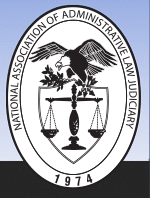First Page
481
Last Page
525
Abstract
The role that government regulatory agencies like the Department of Interior, Bureau of Indian Affairs played in enforcing Native American land leasing and land rights issues has changed substantially over the past five years. Current changes include, empowering American Indian tribes to exercise autonomy over tribal land leases, and the introduction of the Land Buy-Back program. Despite these positive strides, several questions remain; including, how reuniting previously divided allotments of land and placing them in trust will impact the current trust relationship? Should tribes have more say over which fractionated land allotments receive purchase offers and how these lands will be utilized? How has the federal government and regulatory agencies approached land rights issues in the past versus today? And finally, what will the relationships between tribal governments and the federal government look like under a new executive administration? Part II of this comment analyzes the evolution of the federal government’s interpretation of the trust responsibility to the American Indians and describes the historical progression of the federal government’s policy approach towards American Indian tribes from colonization to the introduction of treaties. Part III covers the laws and policies that created the trust relationship between the federal government and American Indian tribes. Part IV explains the role of the Department of Interior, Bureau of Indian Affairs in managing the trust relationship since its inception and also discusses the evolution of perspectives on interpreting the meaning of the trust relationship. Part V details the road that led to fractionation of Indian lands through the federal government’s attempts to assimilate American Indian tribes through the introduction of the Dawes Act, and the various land statuses that resulted from this legislation and still exist today. Part VI details the decades of mismanagement of Individual Indian Money (IIM) accounts by the Department of Interior, Bureau of Indian Affairs. Part VII covers the Cobell litigation from 1996 until the settlement agreement was reached in 2009. Part VIII discusses the creation of the Land Buy-Back program resulting from the Cobell Settlement, and the roles that the Department of Interior and tribes have in carrying out the duties of this settlement. Part IX considers possible changes to the trust relationship that may be expected from the implementation of the Land Buy-Back program, and how a shift of administration will likely impact these changes. Part IX also discusses some issues facing tribes in 2015, and anticipated changes that may occur to the government-to-government relations. Finally, Part X proposes adopting alternative methods and considerations for improving the trust relationship.
Recommended Citation
BrieAnn West,
Mediating Our Future: The Role of the Land Buy-Back
Program in Rebuilding Confidence and Strengthening
Trust Between Tribal Nations and the United States
Government,
35 J. Nat’l Ass’n Admin. L. Judiciary
481
(2016)
Available at:
https://digitalcommons.pepperdine.edu/naalj/vol35/iss2/7

